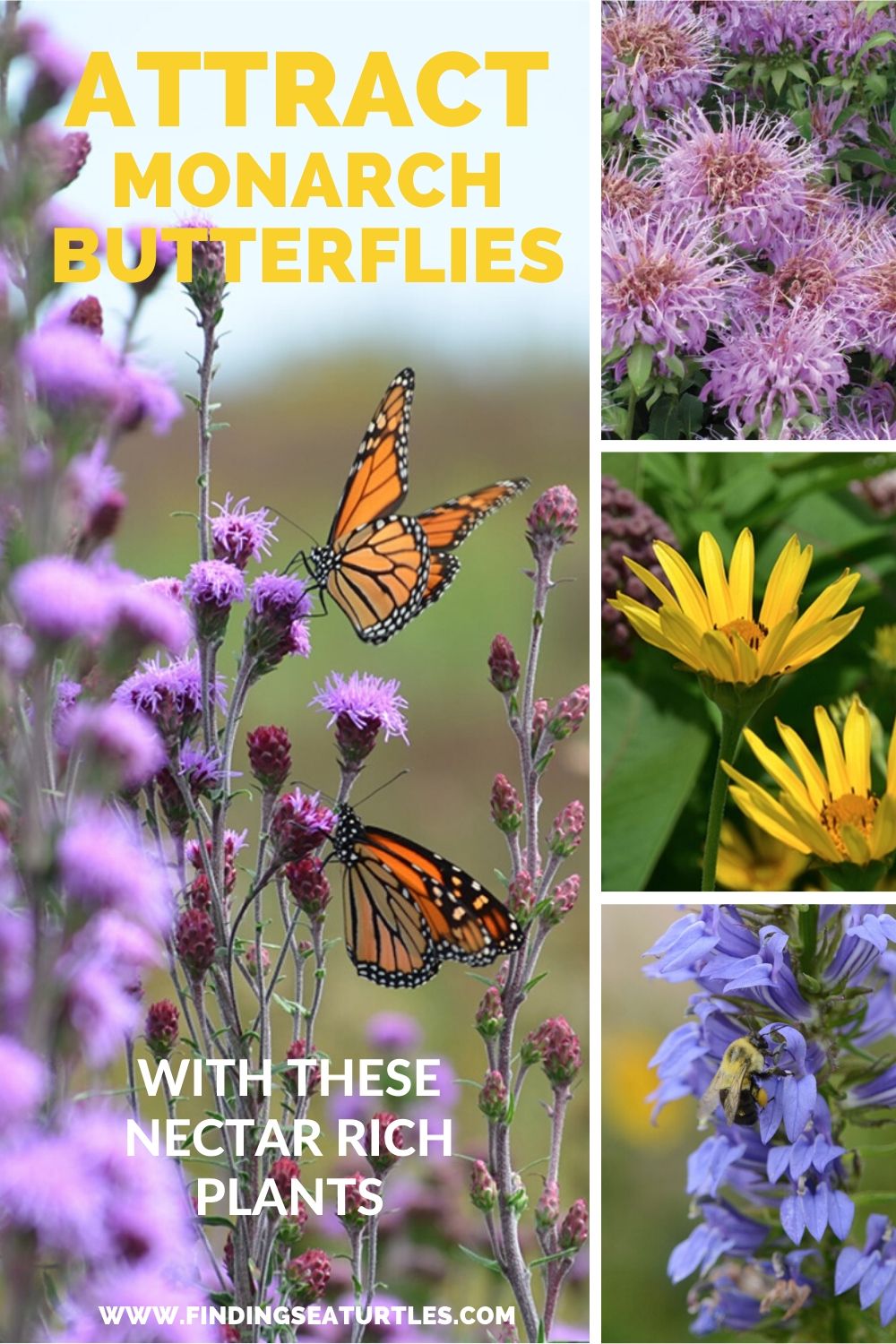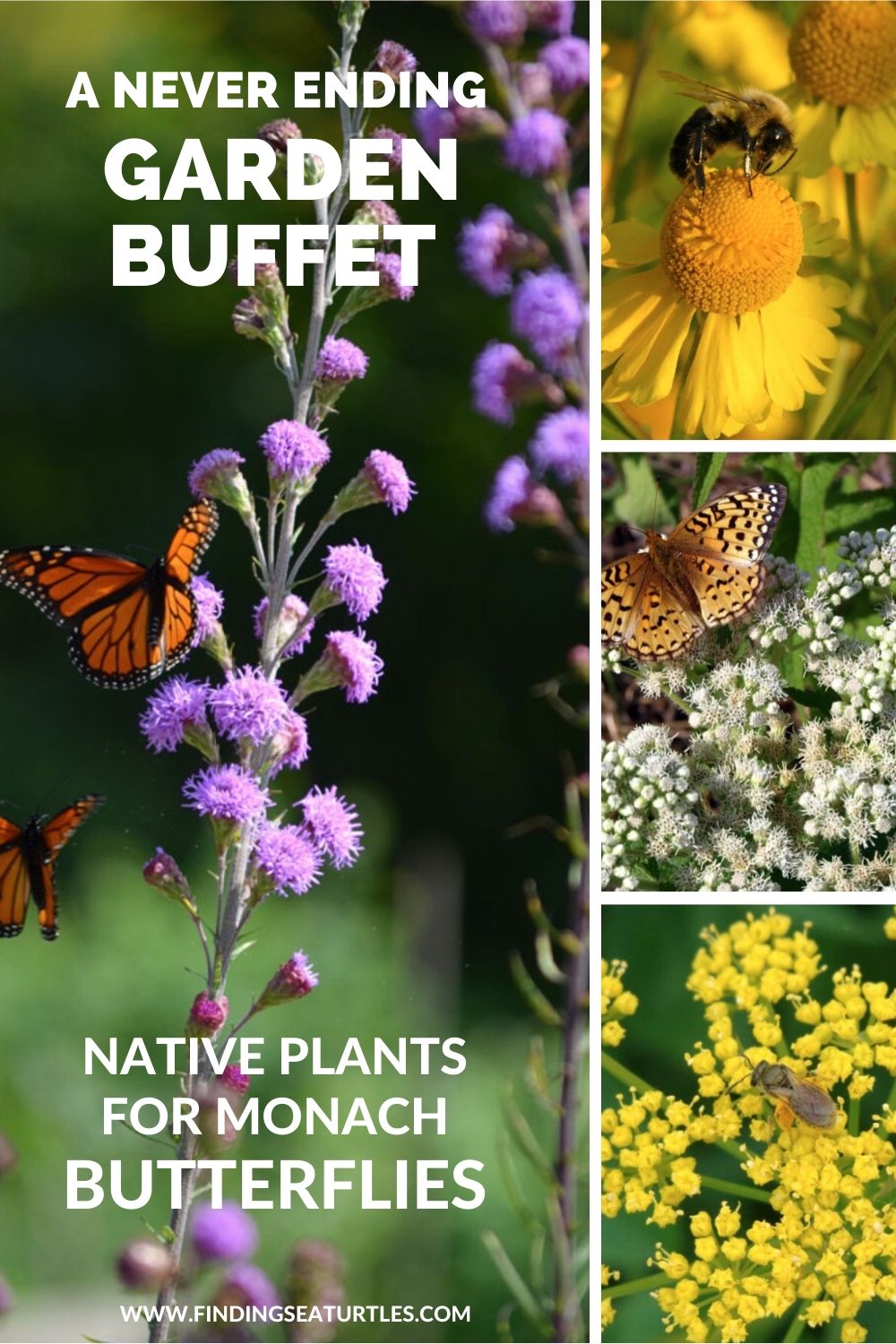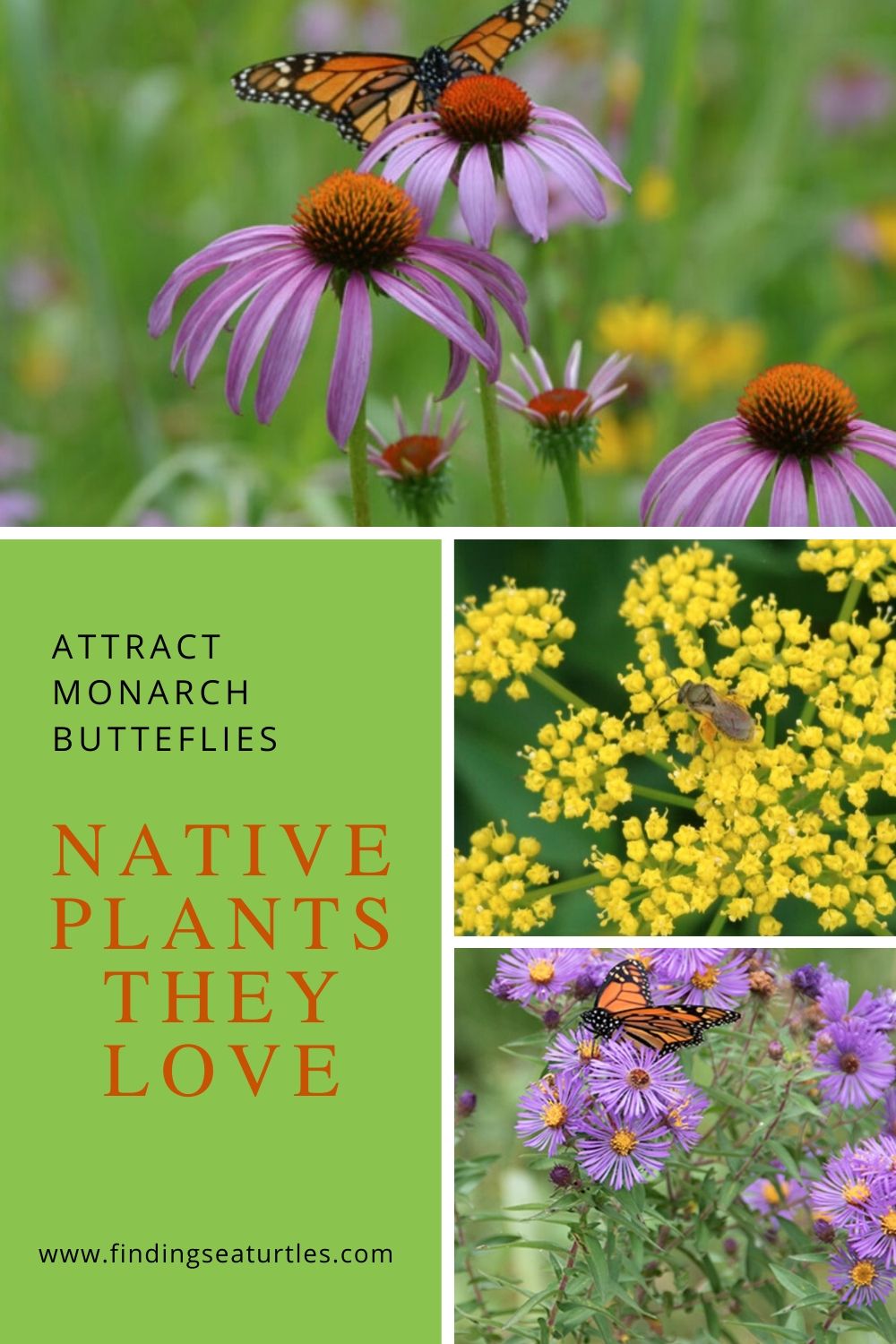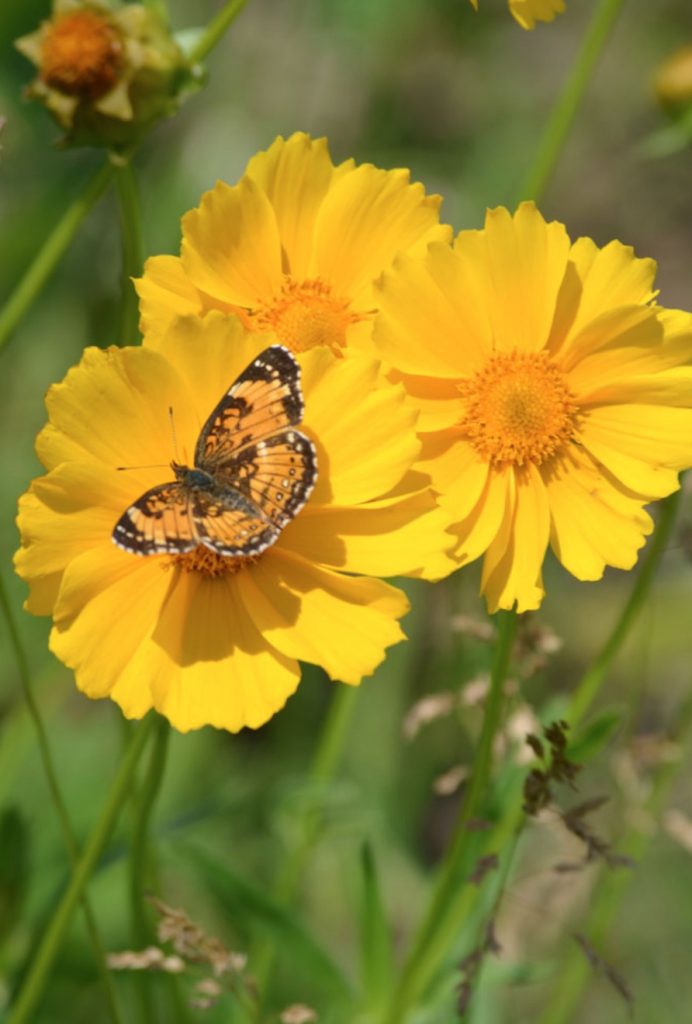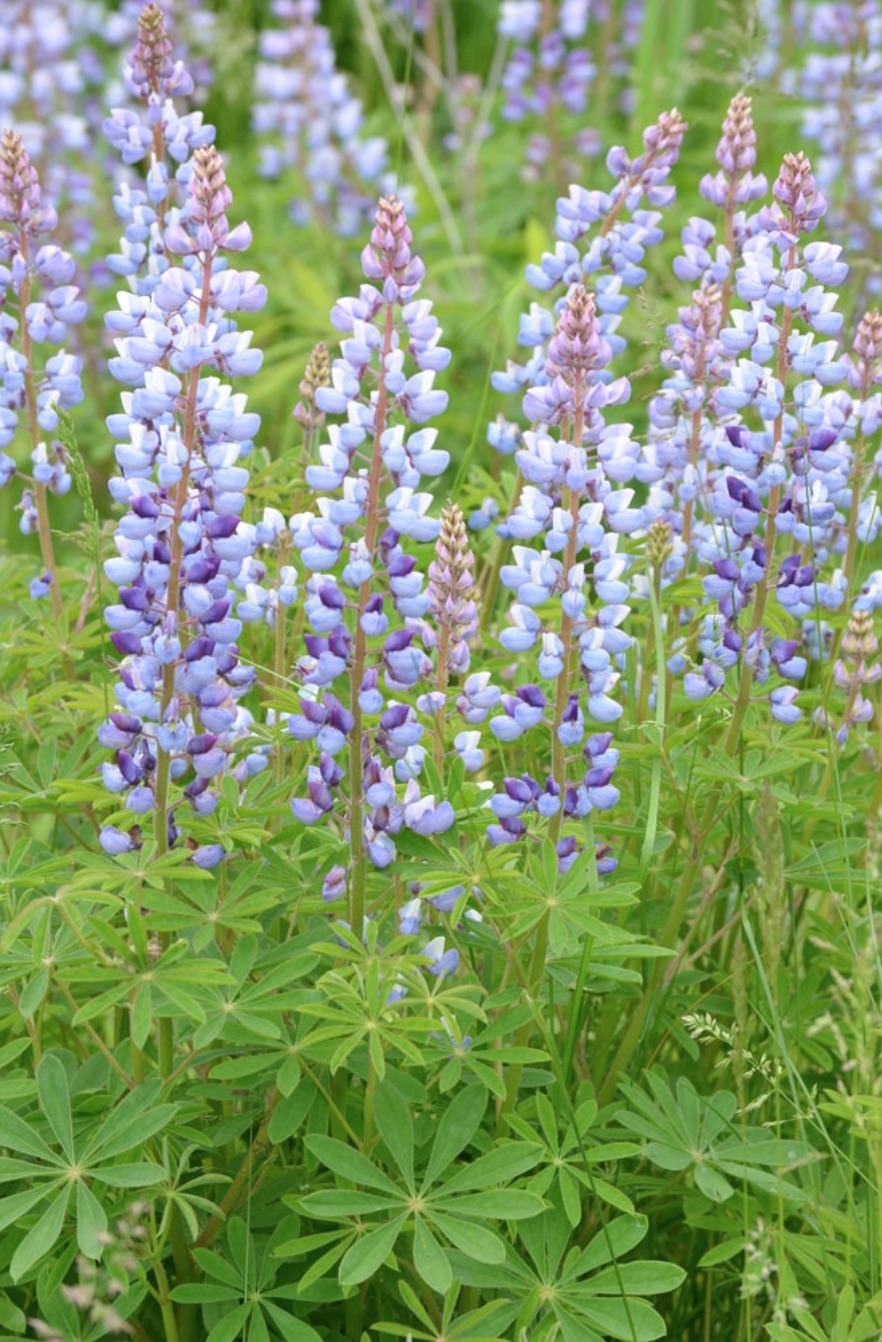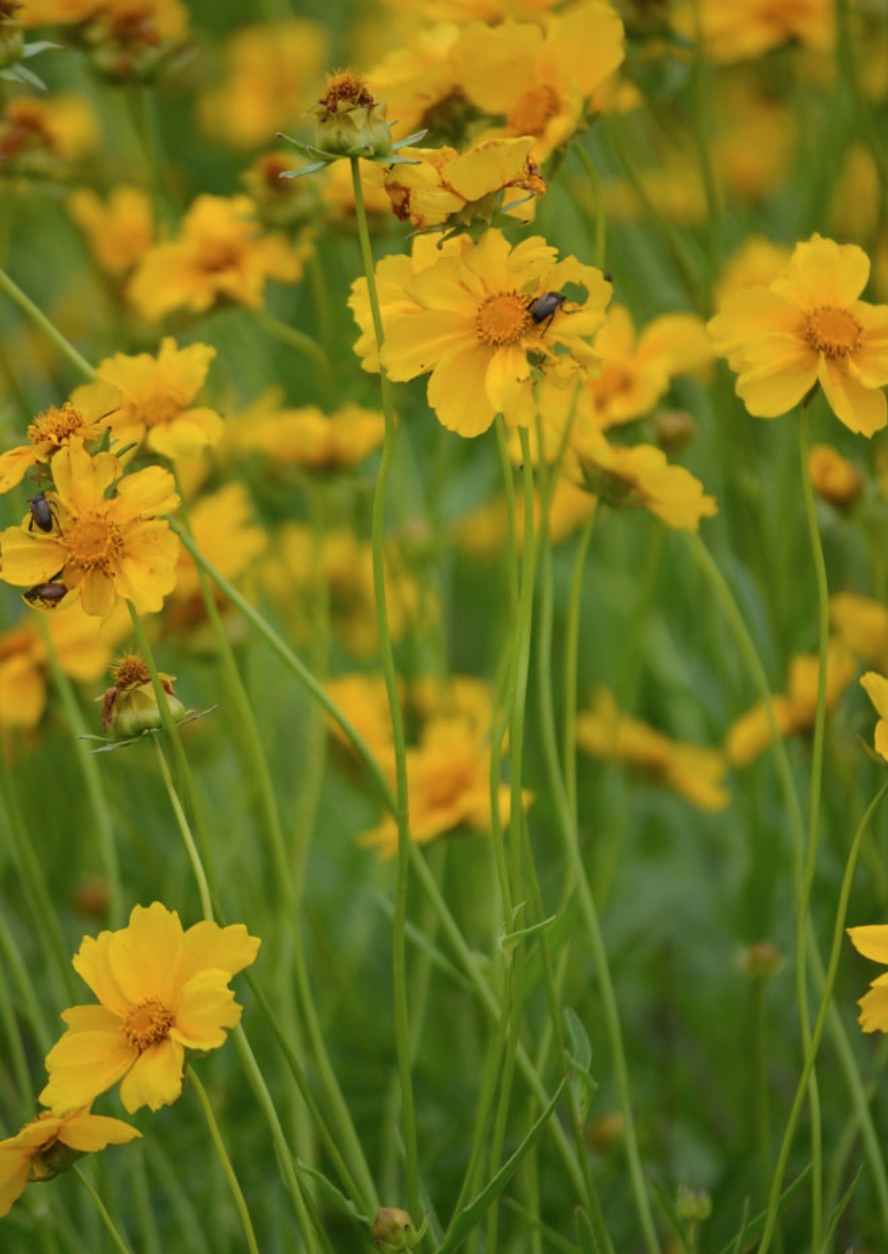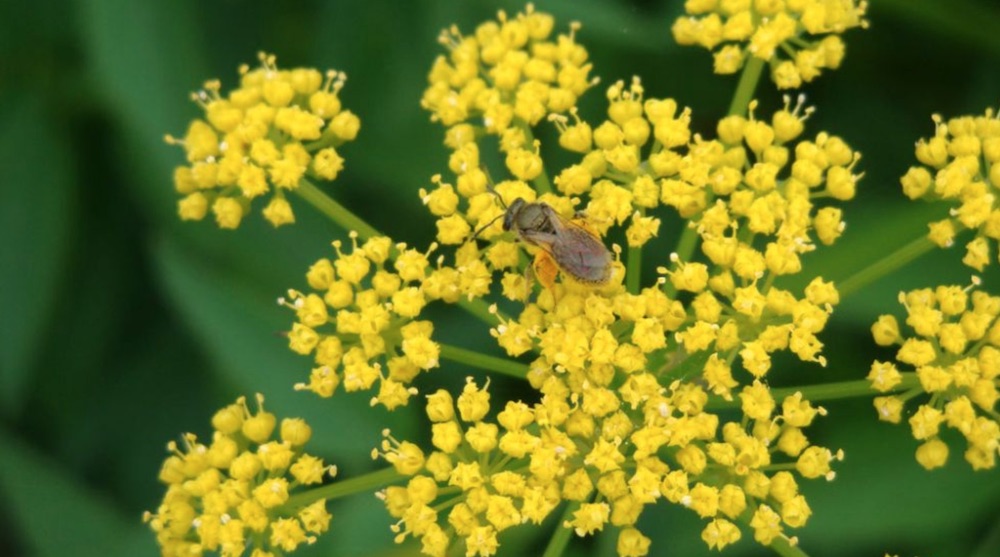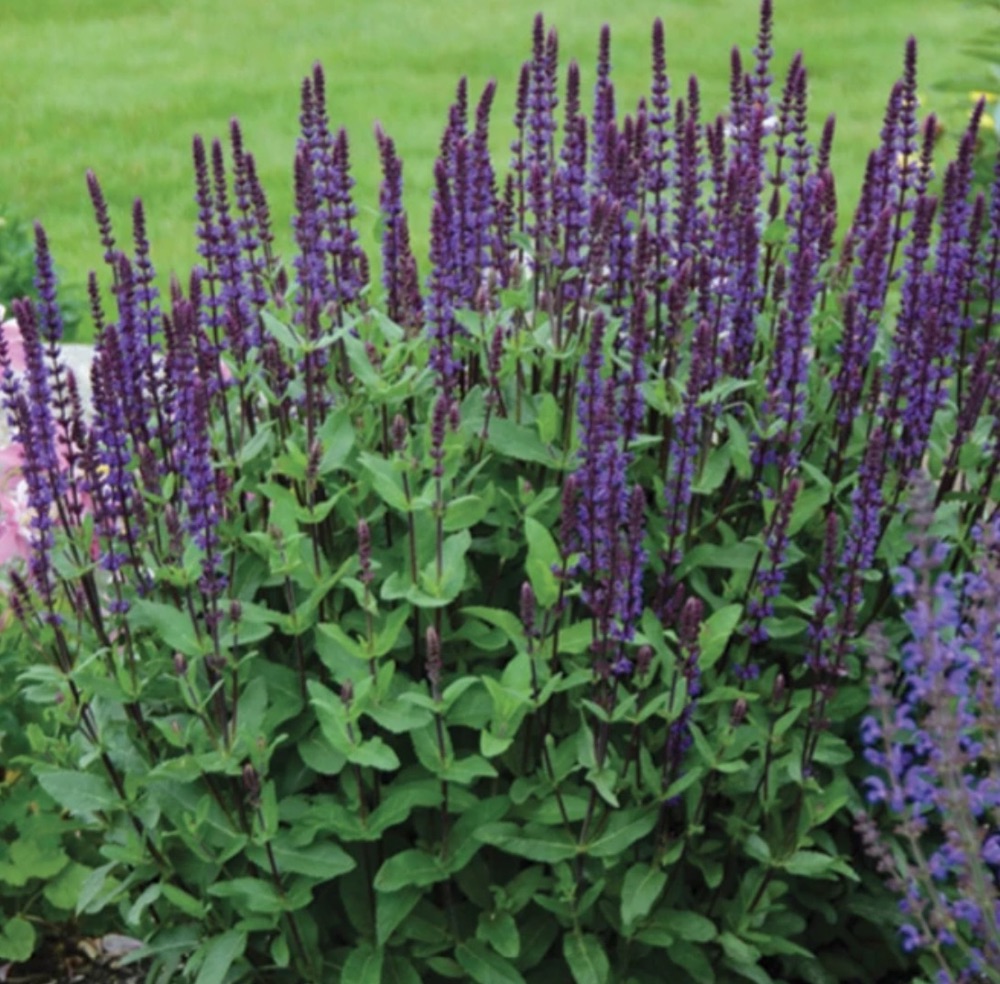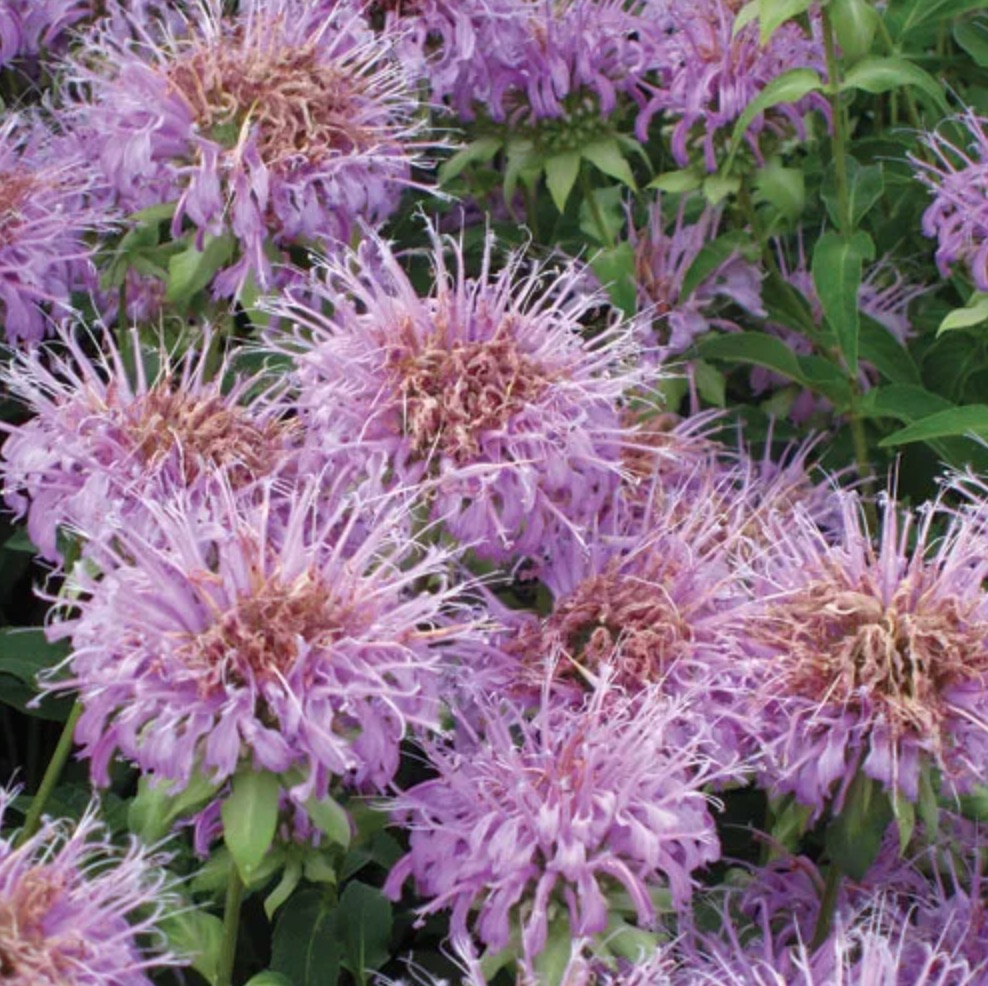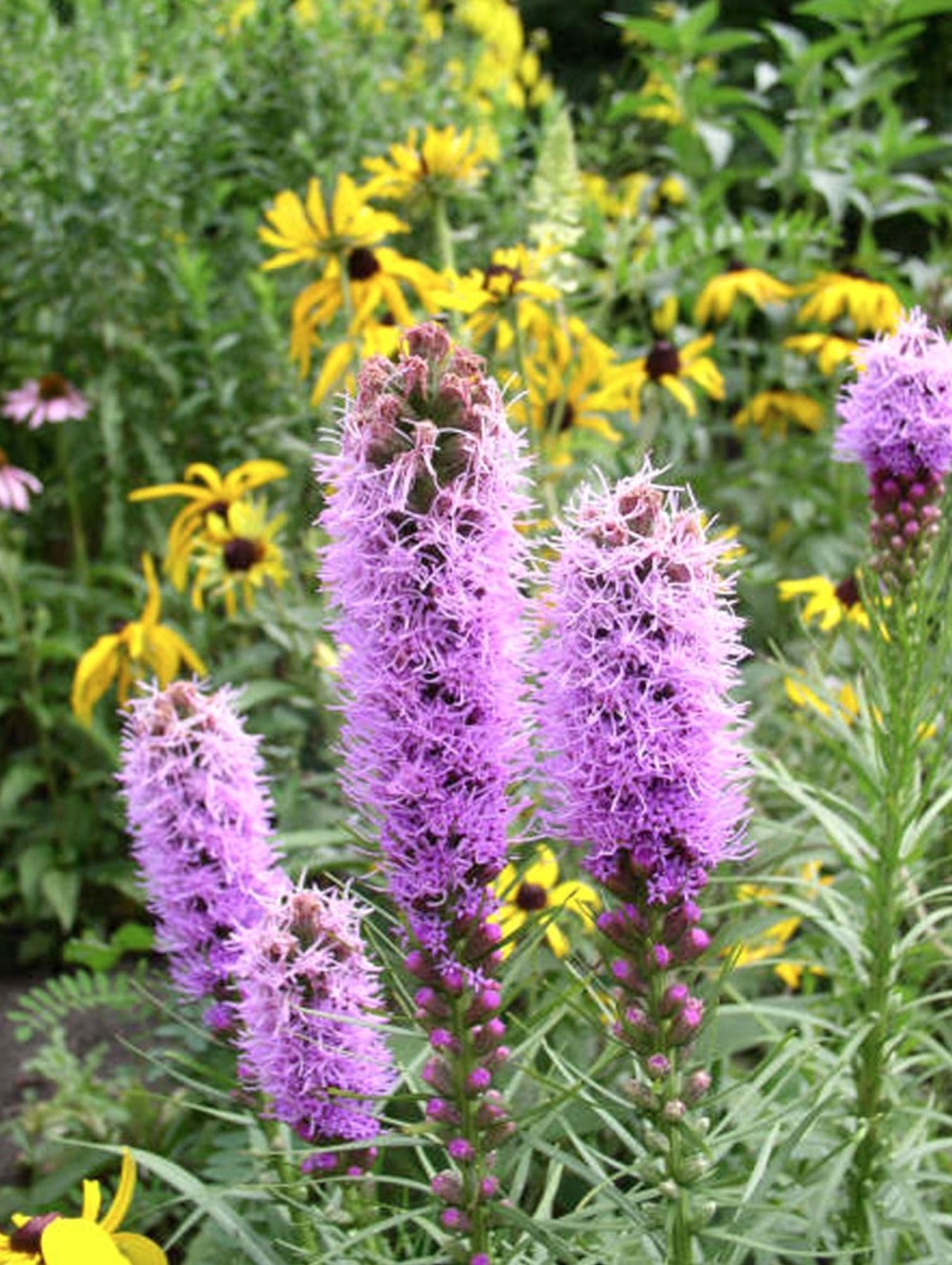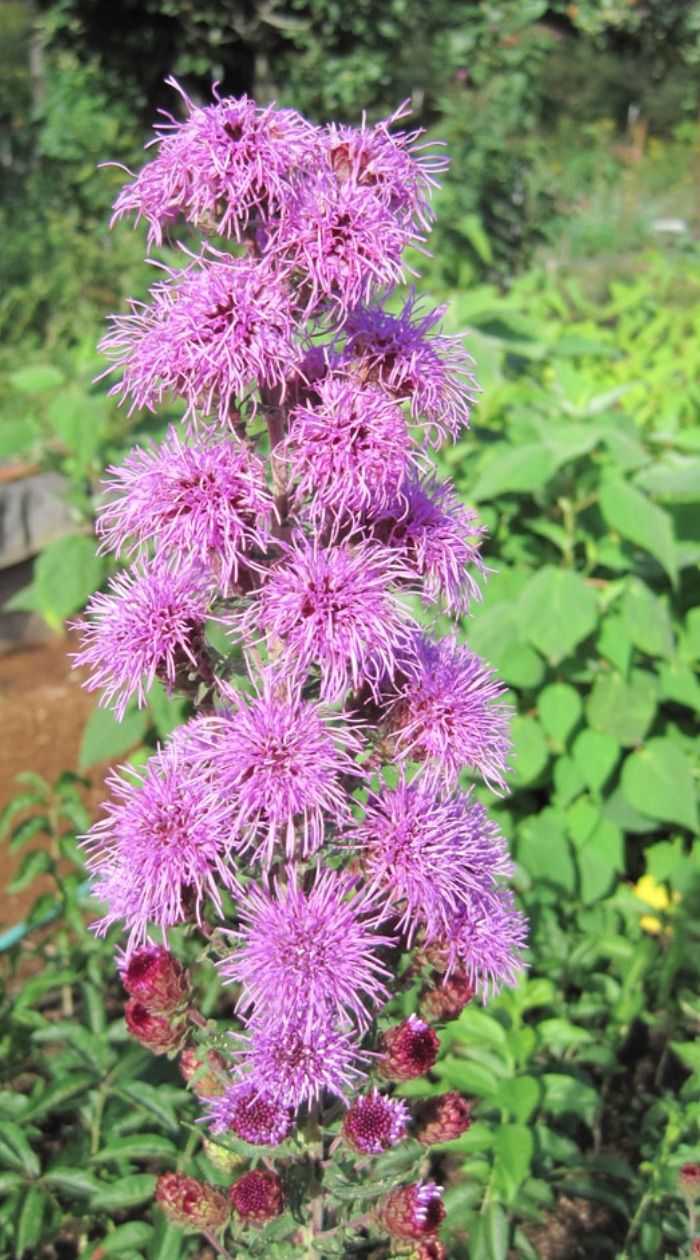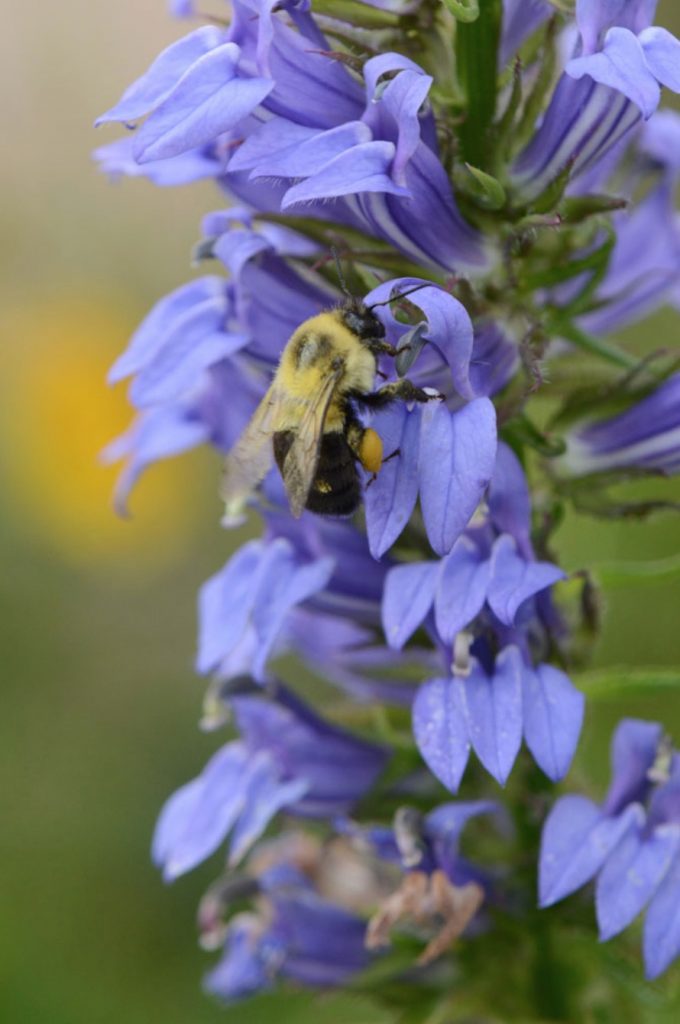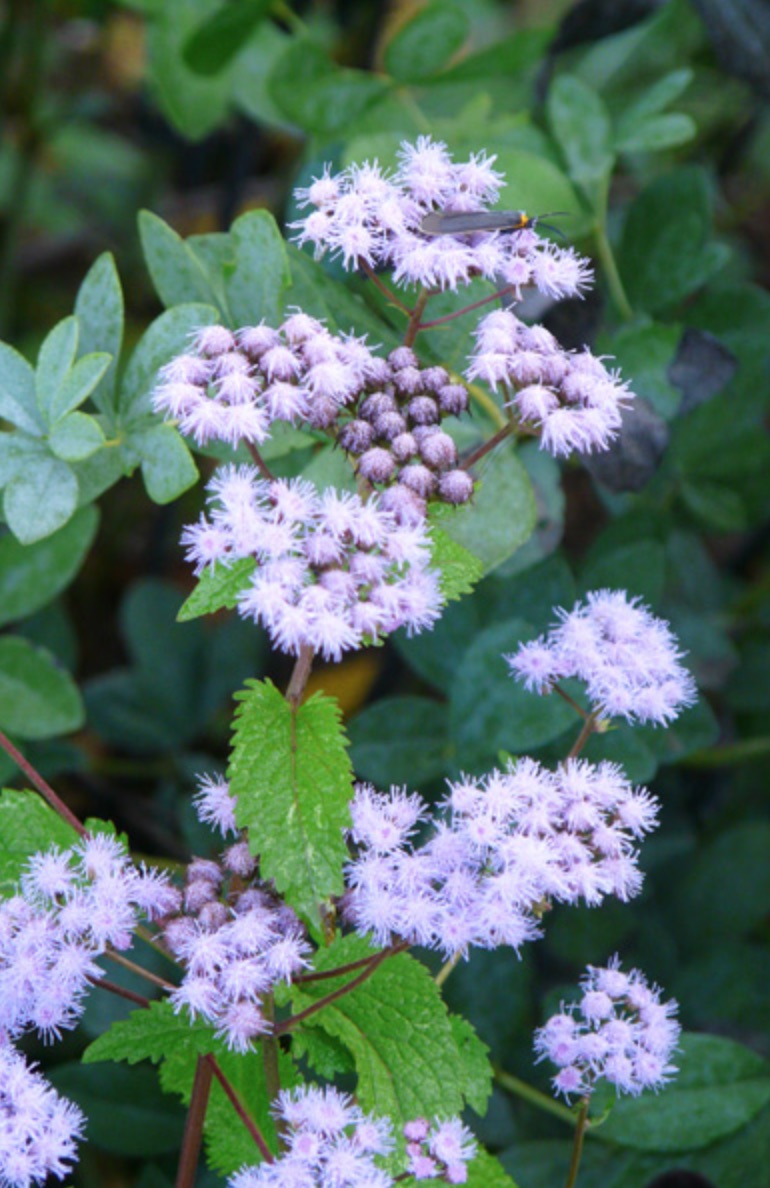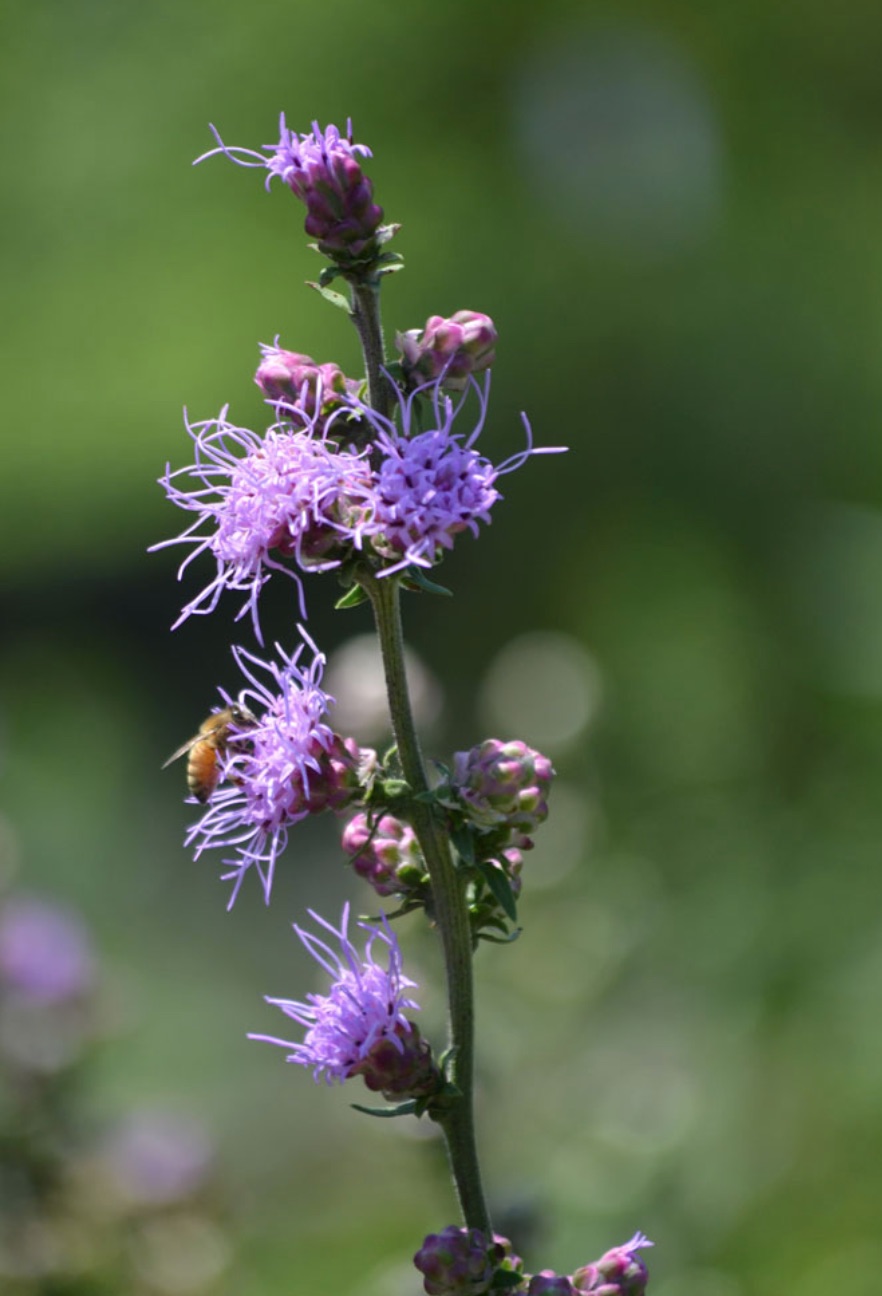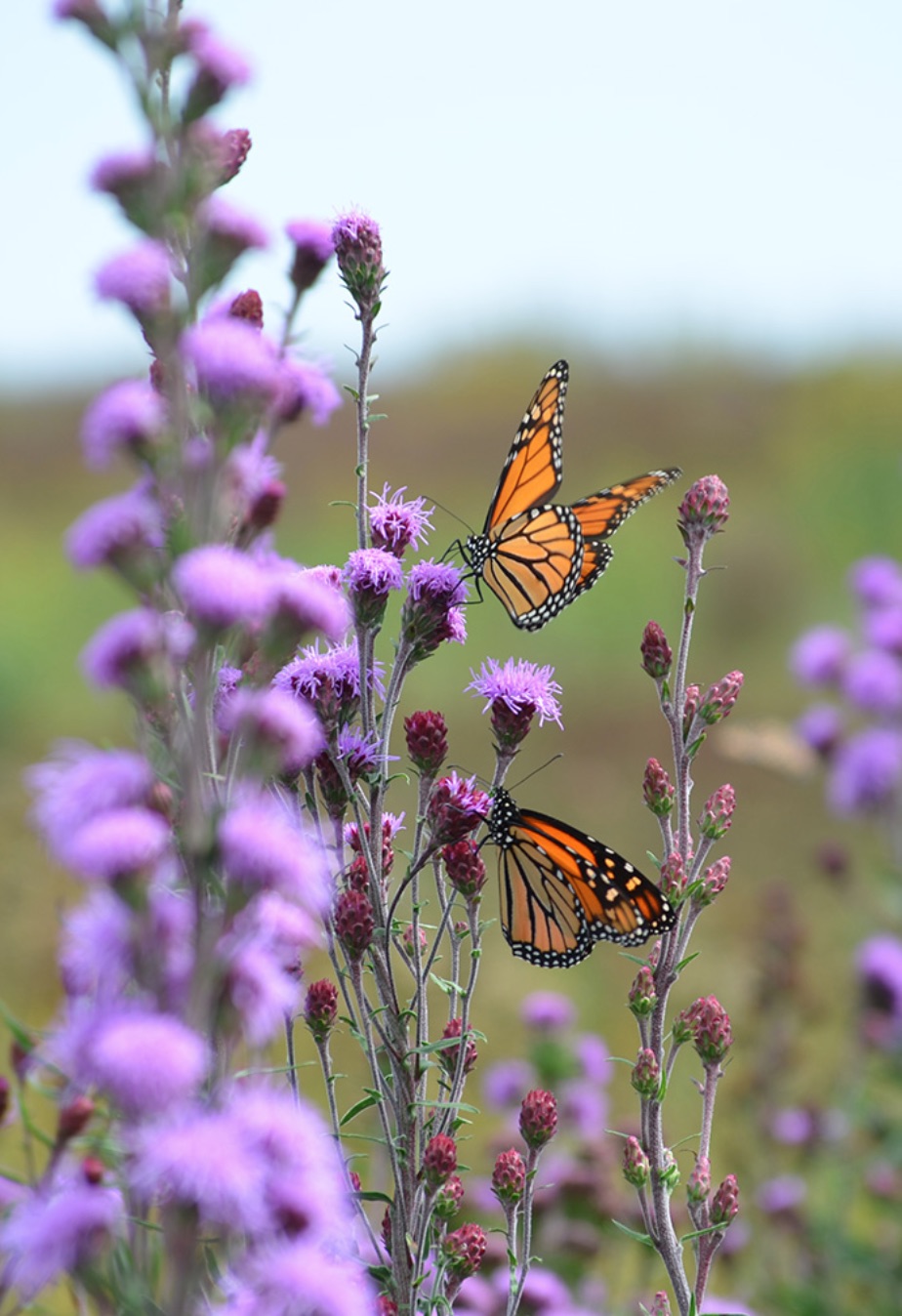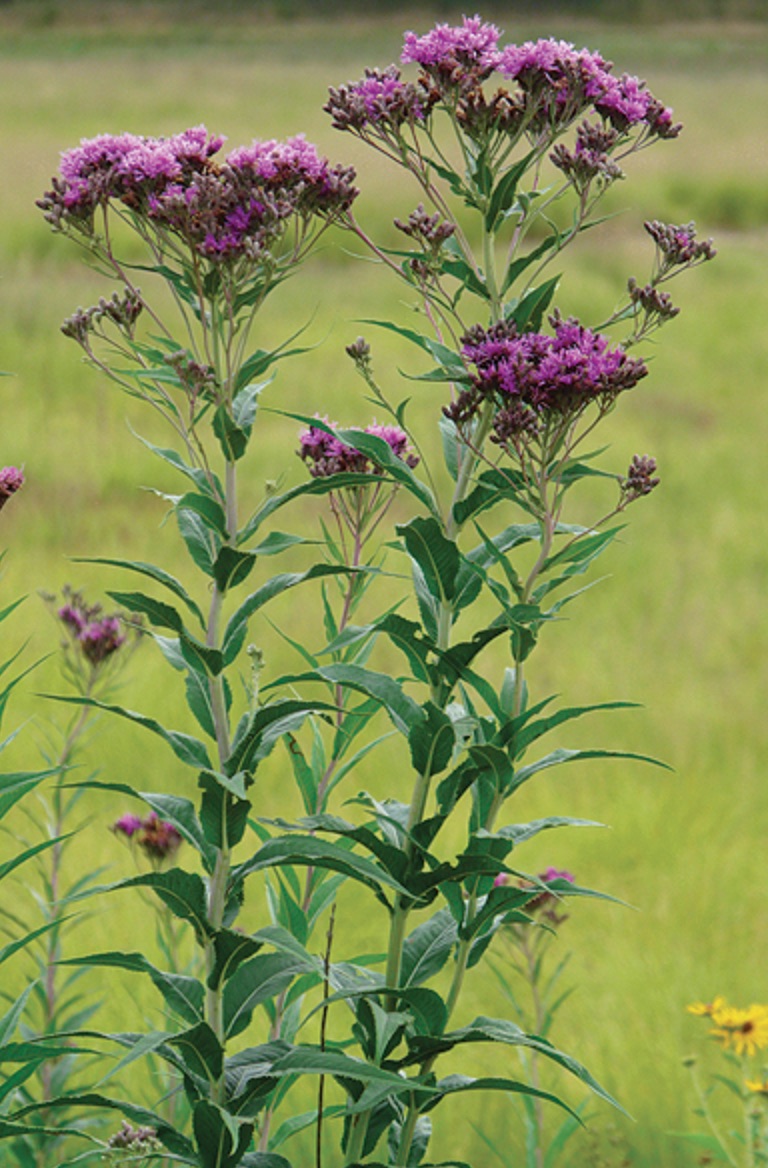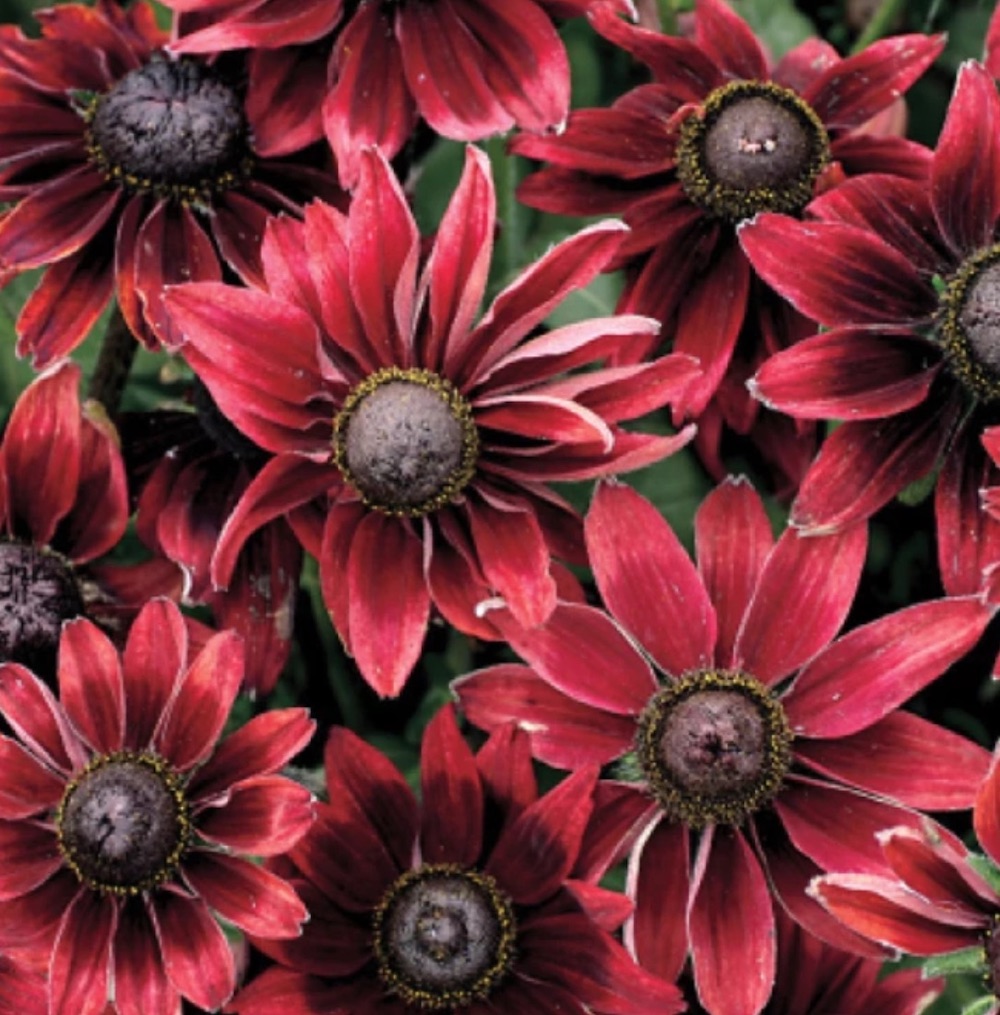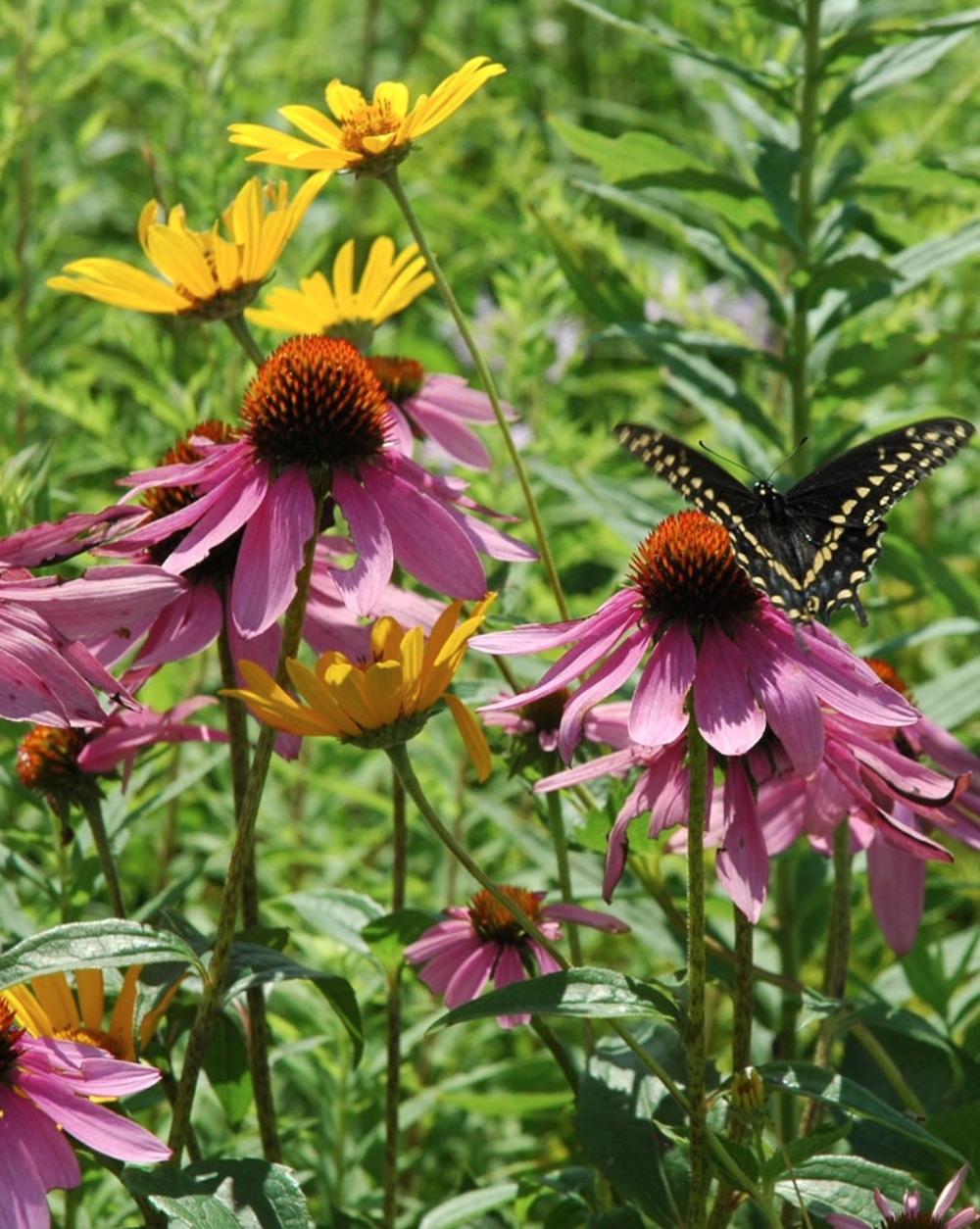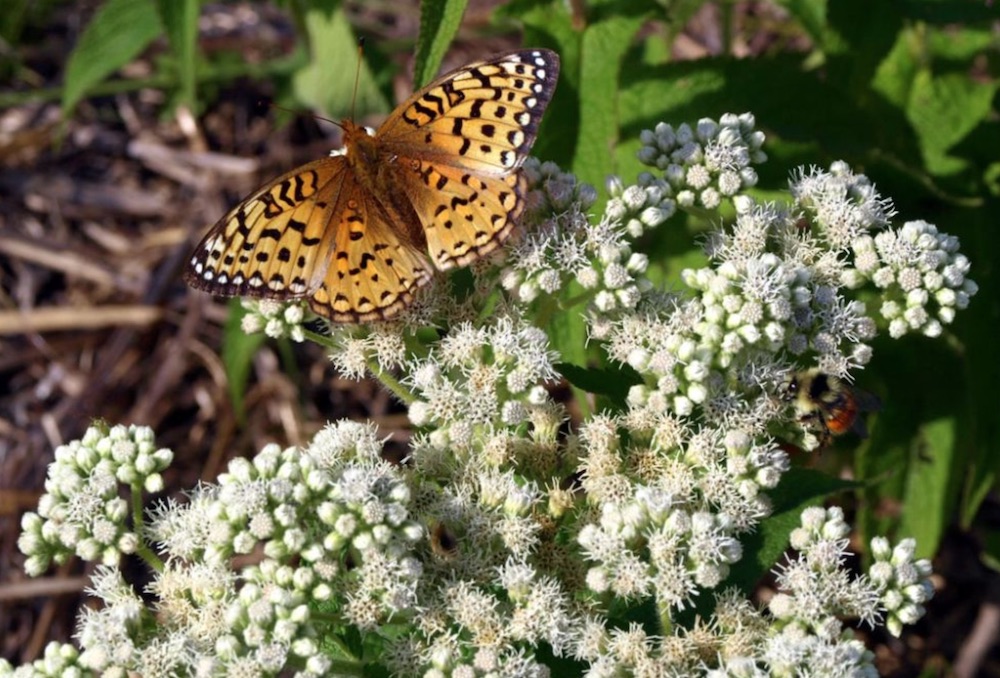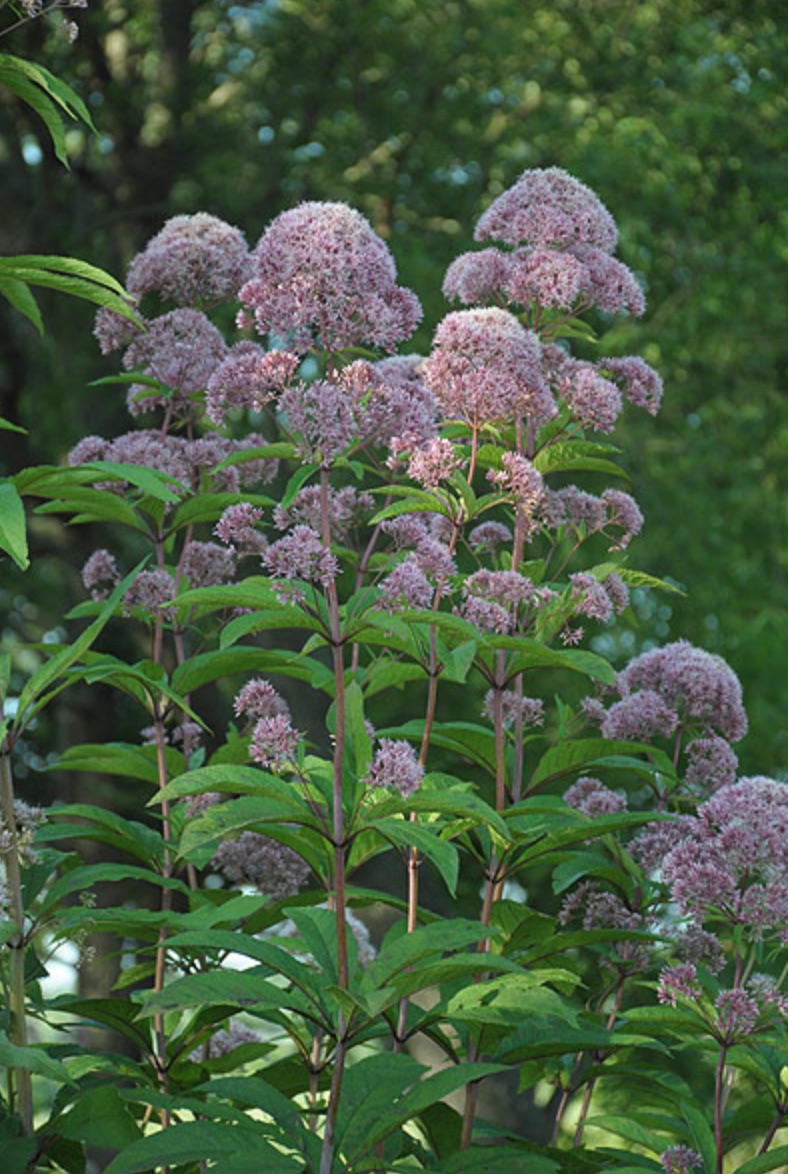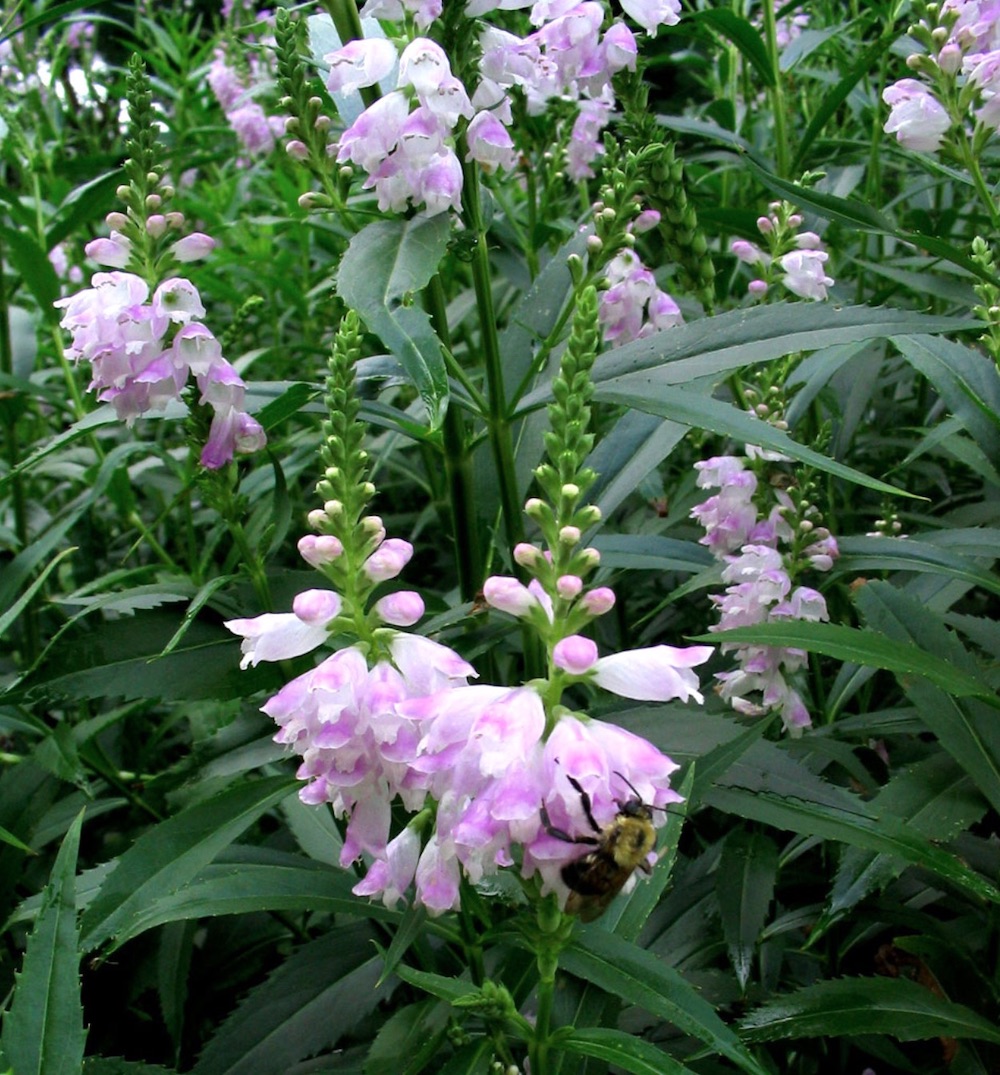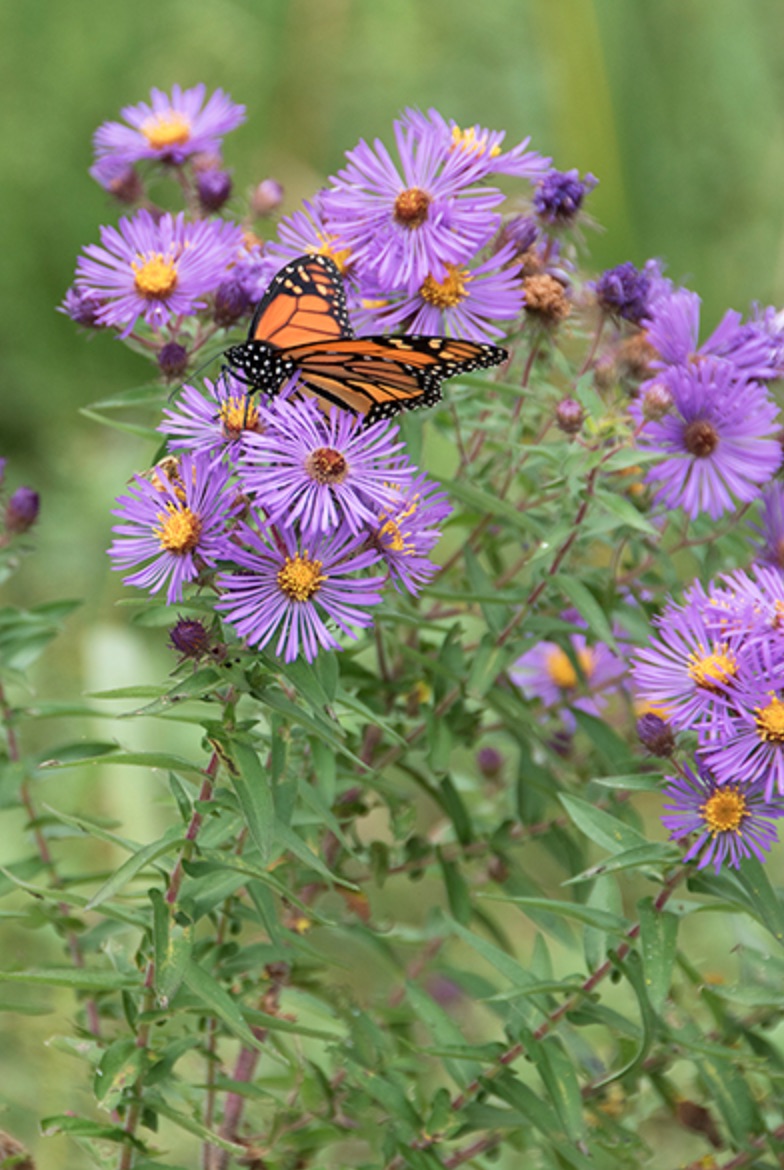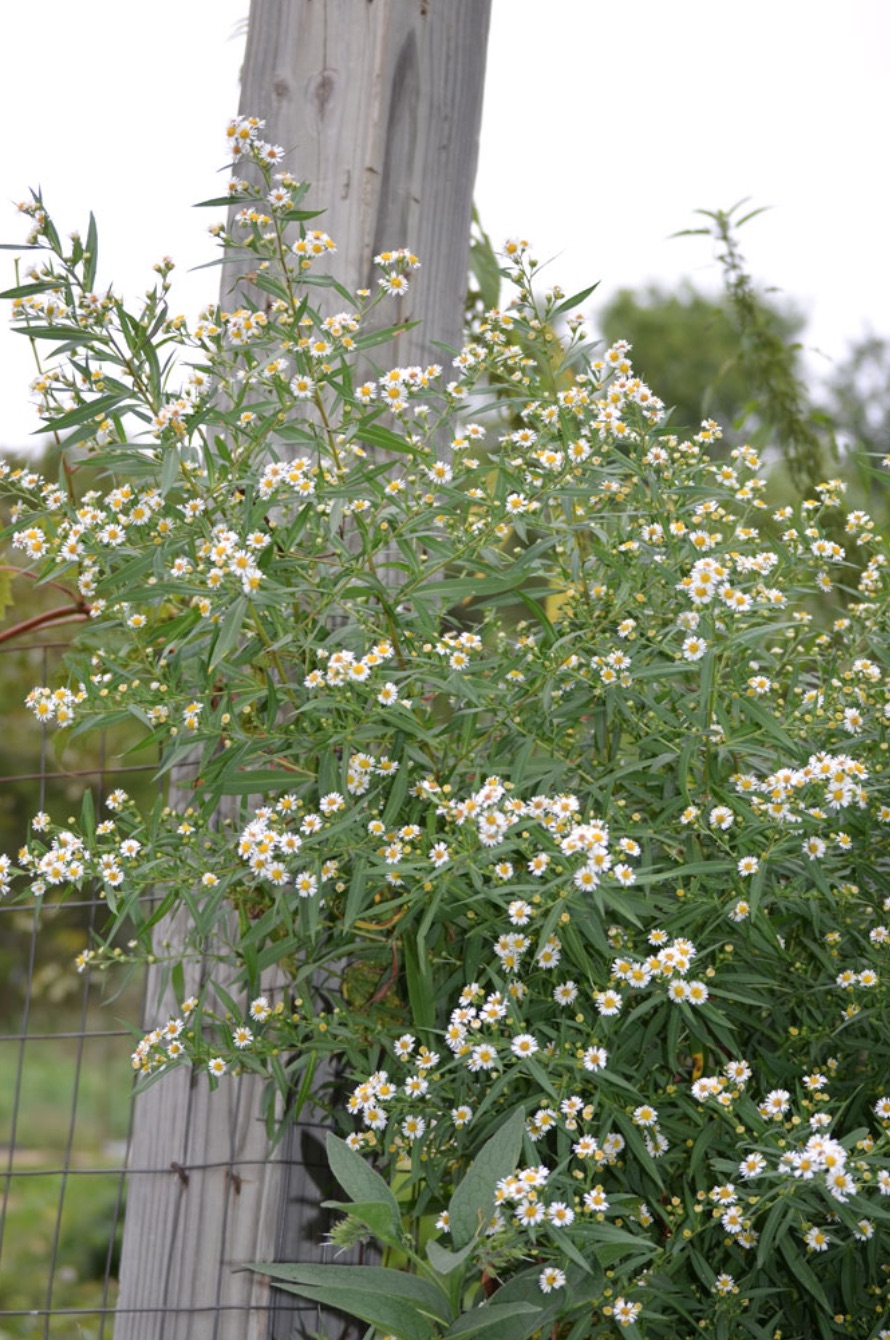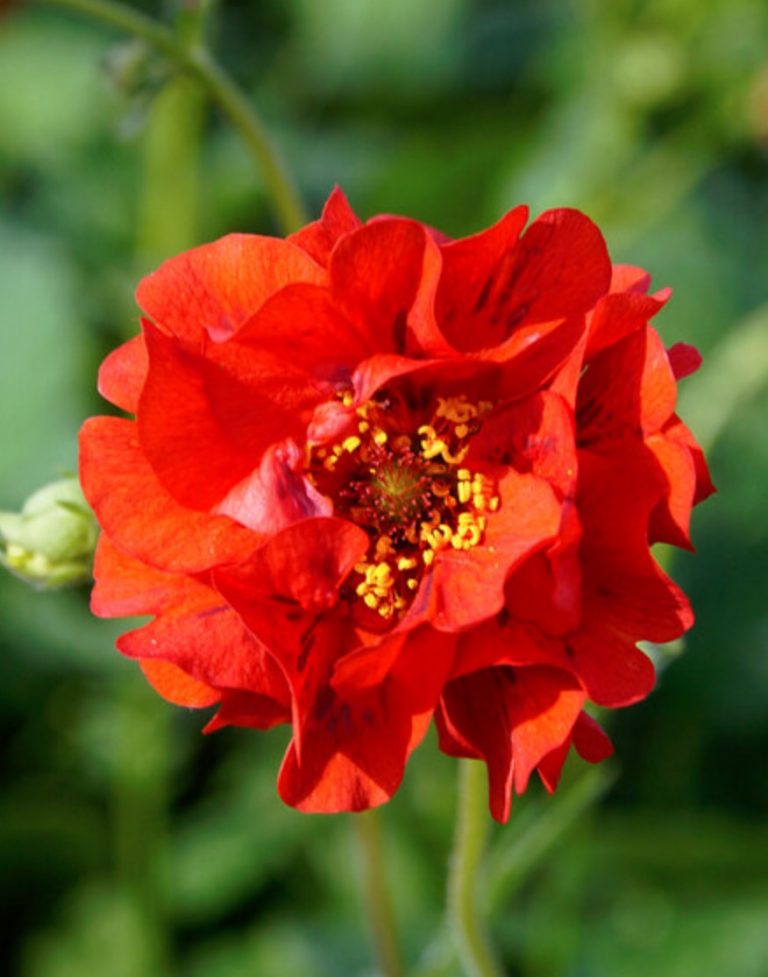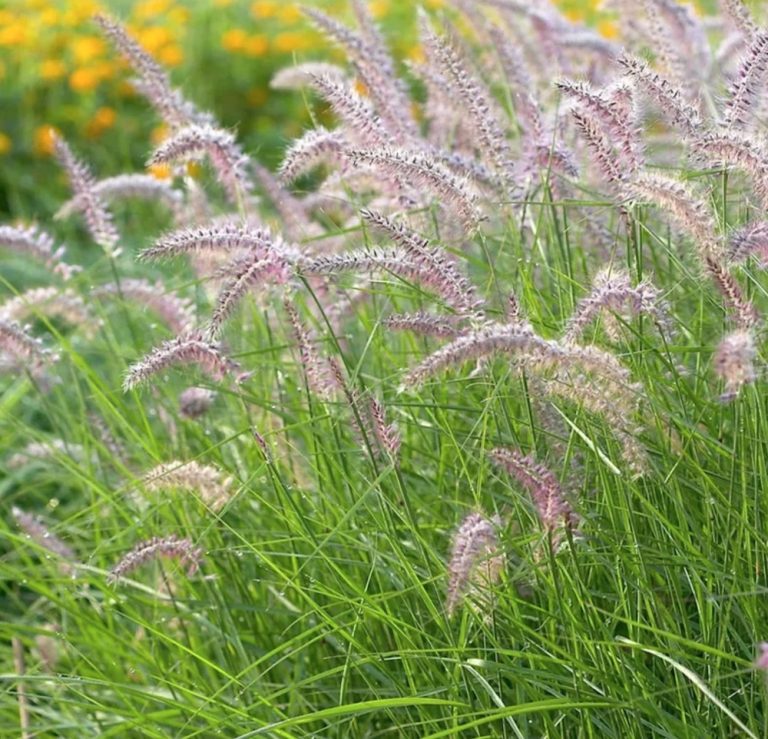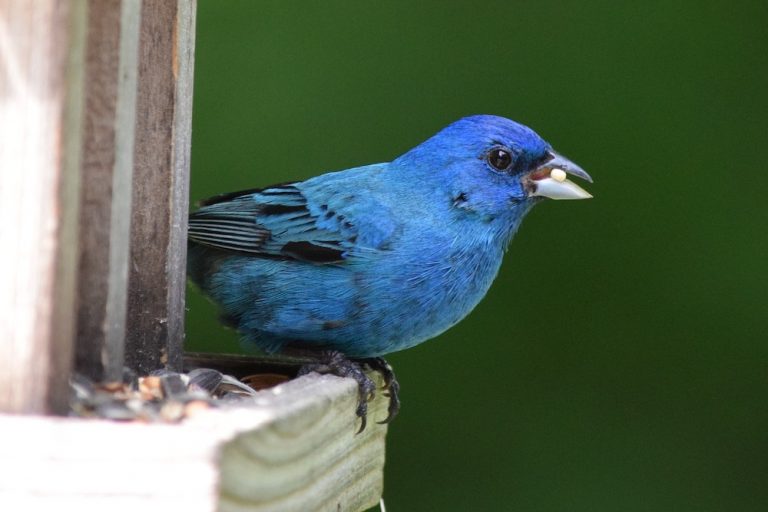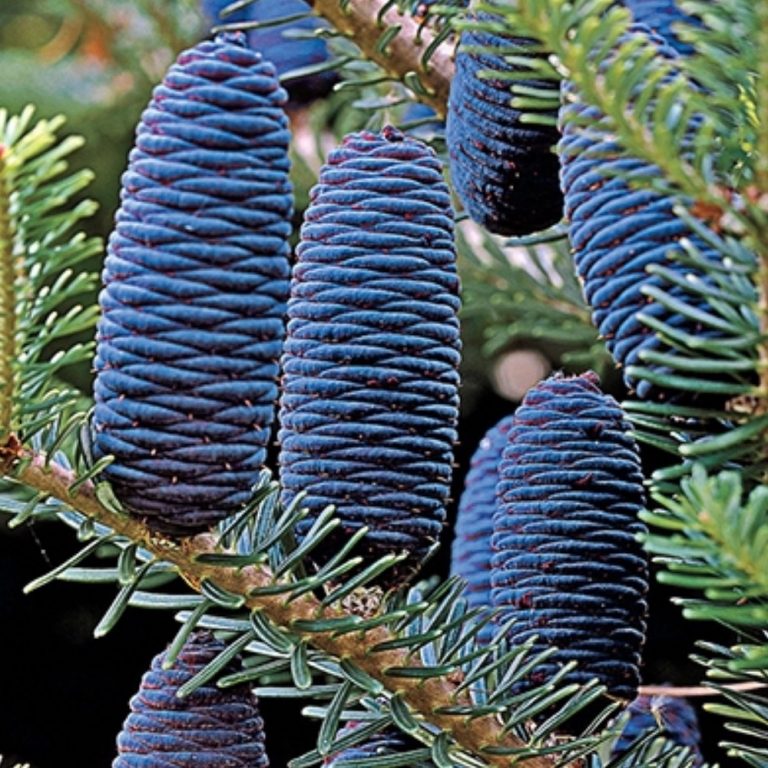Plants that Attract Monarch Butterflies
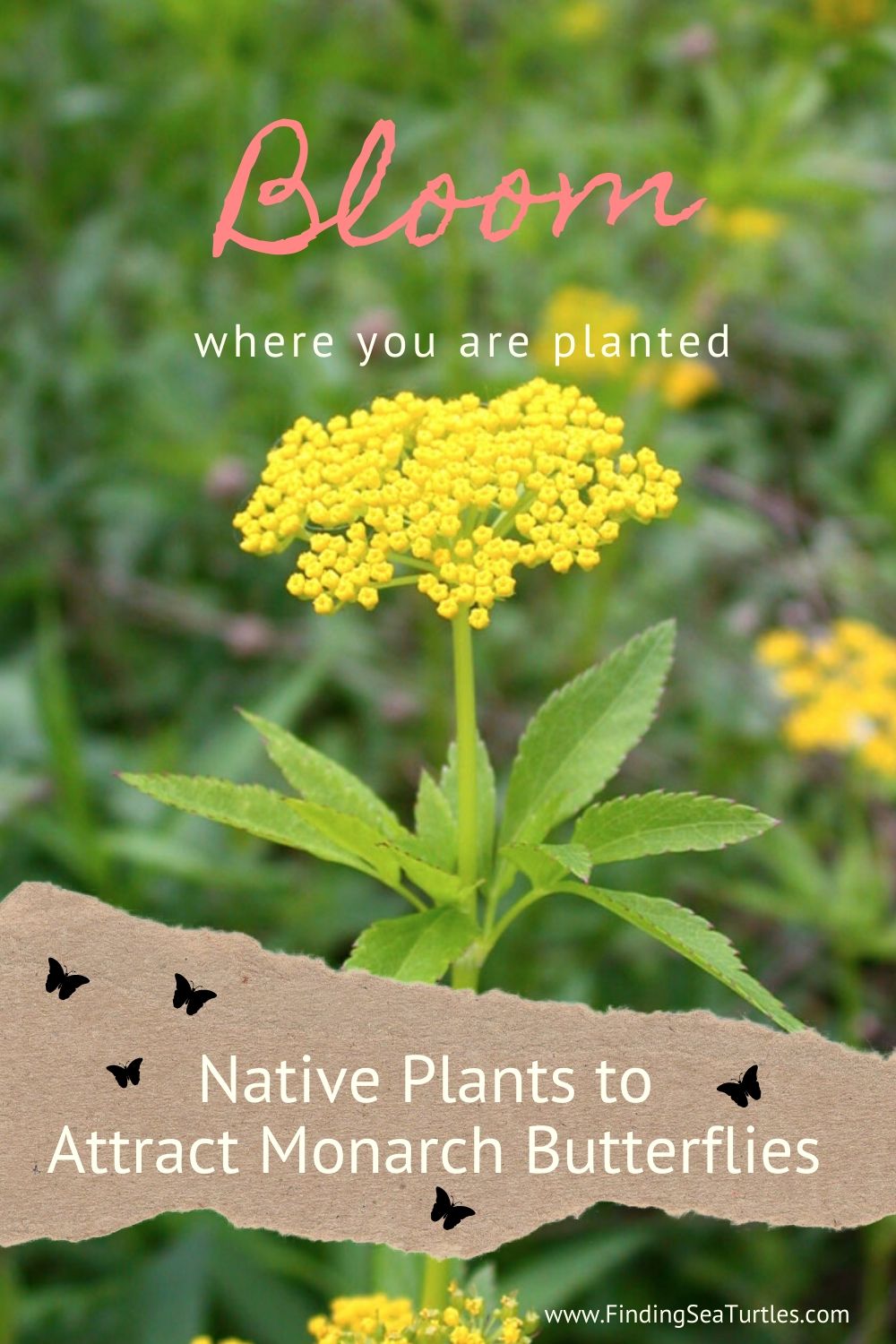
Plants to attract Monarch Butterflies. To make your garden more appealing to Monarch Butterflies, it is important to have the right plants. And the right habitat for the Monarchs.
HABITAT FOR MONARCH BUTTERFLIES
First, select plants with single flower heads. Single flower heads allow butterflies as well as bees to easily retrieve nectar. Second, use native plants in your garden. Native plants such as Asters, Butterfly milkweed, Lupine, Yarrow, and Monarda are reliable nectar sources. Commit to planting native plants to cover 50 percent or more of your garden.
Third, create and maintain a garden area with fresh, clean water. Keep shallow bowls, birdbaths, and ponds filled with fresh water year round. And fourth, design a natural habitat in your garden space using old tree branches, stumps, or tall grass. The natural habitat not only provides cover from predators but shelter from wind and rain storms. Don’t be surprised if you notice other wildlife seeking refuge in this habitat as well!
NECTAR PLANTS
Plants rich in nectar are sought by adult Monarchs, butterflies and other pollinators. The key to success is to maintain a constant steady stream of blooming plants from Spring until the late Fall season. Adult Monarchs will remain in your garden as long as there is nectar to consume. Thus, create a garden space with a variety of plants with different blooming periods. In other words, a non-stop buffet of flowers full of yummy nectar.
And of utmost importance, have nectar full plants growing alongside host plants. Host plants with leaves that provide both cover and shelter for the Monarchs eggs. By doing so, once the larva or caterpillars emerge from the eggs, those same leaves subsequently provide nourishment for the young larva.
A garden space with both host and nectar rich plants improves your success in attracting Monarchs in greater numbers. As a consequence of this, you’ll have a many Monarch visitors. We’ve listed 32 native plants that Monarch butterflies love. Take a look.
Spring to Summer Blooming Plants that Attract Monarch Butterflies
-
Achillea millefolium Cameo
- Zones 3 to 10
- Grows in part shade and part Sun to full Sun
- Reaches 2 to 3 feet tall
- Pinky-peach aging to dusky-rose blooms from Spring to Summer
- Bee friendly
- Attracts butterflies
- Resistant to deer, rabbit, and gopher
- nectar source for Monarch butterflies
- Native California
- Tolerant of drought conditions once established or Waterwise
- Fire resistant
- Tolerant of normal and clay soil conditions
Achillea millefolium is also known as Yarrow. Achillea millefolium Cameo has soft, fern-like foliage as a bonus.
2. Lupinus perennis Wild Lupine
- Zones 3 to 8
- Grows in part shade and part Sun to full Sun
- Reaches 2 feet tall
- Pea-like blue and purple blooms May, June, July
- Bee friendly
- Attracts butterflies
- Nectar source for Monarch butterflies
- Tolerant of normal, sandy, gravel or clay soil conditions
- Host plant for Karner Blue butterfly (Great Lakes region)
- Seed pods attract birds and small mammals
A common name for Lupinus perennis is Wild Lupine. Foliage are palm-shaped leaves with blooms on spikes. An essential plant that sustains the life cycle for the Karner Blue Butterfly. And a butterfly species native to the Great Lakes region.
3. Coreopsis lanceolata Lance-Leaf Coreopsis
- Zones 3 to 9
- Grows in full Sun
- Reaches 2 feet tall
- Yellow daisy-like blooms May, June, July, and August
- Bee friendly
- Attracts butterflies
- Resistant to deer
- Nectar source for Monarch butterflies
- Tolerant of hot dry, sandy, or poor soil conditions
Coreopsis lanceolata has common names that include Lance-Leaf Coreopsis, Sand Coreopsis, or Tickseed. With ray petals of four deep lobes on the margins.
4. Zizia aurea Golden Alexanders
- Zones 3 to 8
- Grow in part shade and part Sun to full Sun
- Reaches 3 feet tall
- Golden yellow blooms begin April, May, and June.
- Bee friendly
- Nectar source for Monarch butterflies
- Tolerates shade conditions but prefers full Sun or light shade conditions
Zizia aurea is also known as Golden Alexanders and Golden Zizia. A member of the carrot family with its yellow umbel flowers. Attracts short-tongued insects to the small yellow flowers. As a bonus feature, the foliage is a food source for Black Swallowtail caterpillars.
5. Viburnum prunifolium Blackhaw Viburnum
- Zones 3 to 9
- Grow in shade to part shade and part Sun to full Sun
- Reaches 12 to 15 feet tall
- White flat top cluster blooms begin April, May, and June
- Yellow berries that darken to blue-black for birds and small mammals
- Beneficial for pollinators
- Attracts birds
- Nectar source for Monarch butterflies
- Tolerates juglone from Black Walnut Trees (note: juglone can be toxic to some plants)
Viburnum prunifolium shrub is also known as Blackhaw Viburnum. Plant as a single specimen or in a group for a tall hedge or screen. Two to three shrubs are recommended for cross pollination and production of berries. As a plus, this shrub is host to many butterflies and moths.
6. Salvia nemorosa Caradonna
- Zones 3 to 8
- Grows in full Sun
- Reaches 24 to 30 inches tall
- Dark purple blooms early Summer
- Bee friendly
- Attracts butterflies
- Attracts birds and hummingbirds
- Resistant to deer and rabbits
- Nectar source for Monarch butterflies
- Tolerant of drought conditions once established
Salvia nemorosa Caradonna has dark purple floral spikes. Ideal in drifts or along a garden walkway.
Summer Blooming Plants to Attract Monarch Butterflies
7. Wild Bergamot (Wichita Mountains Form)
- Zones 4 to 8
- Grows in morning Sun and afternoon shade to full Sun
- Reaches 30 to 36 inches tall and 18 to 24 inches wide
- Lavender pink floral cluster blooms from early to late Summer
- Bee friendly
- Attracts butterflies
- Attracts hummingbirds
- Resistant to deer and rabbits
- Nectar source for Monarch butterflies
- Native
- Fragrant flowers
- Tolerant of drought conditions once established or Waterwise (moderately Xeric)
- Tolerates normal, sandy, and clay soil conditions
Wild Bergamot is also known as Bee Balm and Monarda fistulosa. A low maintenance native perennial, adaptable to most soil conditions.
Summer to Fall Blooming Plants to Attract Monarch Butterflies
8. Heliopsis helianthoides
- Zones 3 to 8
- Grows in full Sun
- Reaches 3 to 6 feet tall
- Yellow blooms during the months of June July August and September
- Beneficial for pollinators
- Attracts butterflies
- Attracts birds
- Nectar source for Monarch butterflies
- Native
- Host plant butterflies
- Tolerant of normal, clay, or sandy soil conditions
Heliopsis helianthoides is also known as Ox Eye Sunflower. Related to the Sunflower, this perennial produces bright yellow flowers. Thrives in heavy, clay soils.
9. Helianthus divaricatus
- Zones 3 to 8
- Grows in full shade to part shade and part Sun
- Reaches 3 to 5 feet tall
- Yellow blooms from July through August
- Beneficial for pollinators
- Attracts birds
- Resistant to deer
- Nectar source for Monarch butterflies
- Native
- Tolerant of drought conditions once established or Waterwise
Helianthus divaricatus is also known as Woodland Sunflower. Grows in large patches in dry rocky woods, clearings and edges.
10. Liatris punctata
- Zones 3 to 9
- Grows in part shade and part Sun to full Sun
- Reaches 2 feet tall
- Purple blooms from July, August, September
- Bee friendly
- Resistant to deer
- Nectar source for Monarch butterflies
- Native
- Tolerant of drought conditions once established or Waterwise
Liatris punctata is also known as Dotted Blazing Star. Deep root systems form on the Xeric Liatris which protects it in hot dry climates.
11. Liatris spicata
- Zones 3 to 10
- Grows in part shade and part Sun to full Sun
- Reaches 5 feet tall
- Purple blooms from July, August, September
- Bee friendly
- Resistant to deer
- Nectar source for Monarch butterflies
- Native
Liatris spicata is also known as Dense Blazing Star and Marsh Blazing Star. Considered more tolerant of moist soil conditions than other liatris species.
12. Liatris scariosa var. nieuwlandii
- Zones 3 to 8
- Grows in part shade and part Sun to full Sun
- Reaches 2 feet tall
- Purple thistle-like blooms from August through September
- Bee friendly, especially bumble bees
- Attracts butterflies, especially Monarch butterflies
- Nectar source for Monarch butterflies
- Native
- Keep protected from deer, cattle, and rabbits
Liatris scariosa is also known as Northern Blazing Star and Savanna Blazing Star. Prefers medium to dry soils with sand or rock components.
13. Lobelia siphilitica
- Zones 3 to 9
- Grows in part shade and part Sun to full Sun
- Reaches 3 feet tall
- Blue blooms July, August, September, October
- Bee friendly
- Attracts butterflies
- Resistant to deer
- Nectar source for Monarch butterflies
- Native
Lobelia siphilitica common name is Great Blue Lobelia.
14. Conoclinium coelestinum
- Zones 5 to 10
- Grows in part shade and part Sun to full Sun
- Reaches 1 to 3 feet tall
- Lavender, purple, and blue blooms July, August, September, October
- Bee friendly
- Attracts butterflies
- Tolerant of normal, sandy, and clay soil conditions
- Nectar source for Monarch butterflies
- Native of eastern US
Common names for conoclinium coelestinum are Blue Mistflower, Hardy Ageratum, Wild Ageratum, and Blue Boneset. Blue-violet flowers for Fall pollinators. A low growing ground cover for shade garden areas.
15. Liatris pycnostachya
- Zones 3 to 9
- Grows in shade to part shade and part Sun to full Sun
- Reaches 4 feet tall
- Purple blooms July, August, September
- Bee friendly
- Attracts butterflies
- Attracts hummingbirds
- Native
- Nectar source for Monarch butterflies
- Tolerates clay and poor soil conditions
Other common names for Liatris pycnostachya are Prairie Blazing Star and Kansas Gayfeather. Display in a floral arrangement.
Plant with other natives such as Yellow Coneflower, Rattlesnake Master, Mountain Mint, Wild Bergamot, and Goldenrods.
16. Liatris aspera
- Zones 3 to 8
- Grows in part shade and part Sun to full Sun
- Reaches 36 inches tall
- Purple blooms July, August, September, October
- Bee friendly
- Attracts butterflies
- Attracts hummingbirds
- Native
- Nectar source for Monarch butterflies
Common names for Liatris aspera are Button Blazing Star and Rough Blazing Star. Prefers full Sun but tolerates light shade. Performs best in medium to dry soil conditions. Display Liatris in either fresh or dried floral arrangements.
Some of the insects that are frequent guests of the Liastris are honey bees, bumblebees, little Carpenter bees, Miner bees, and Leaf-Cutting bees. Many butterfly visitors including Monarchs, Painted Ladies, Black Swallowtails, and Sulfurs visit this species of Liatris.
17. Liatris ligulistylis
- Zones 3 to 7 Grows in part shade and part Sun to full Sun
- Reaches 5 feet tall
- Purple blooms August, September
- Attracts butterflies
- Attracts birds
- Native
- Nectar source for Monarch butterflies
The common name for Liatris ligulistylis is Meadow Blazing Star. Attracts Monarchs and other butterflies. After blooming has finished, birds feed on the seeds that develop.
18. Helianthus pauciflorus
- Grows in part shade and part Sun to full Sun
- Reaches 5 feet tall
- Yellow single petal blooms July, August, September
- Native
- Resistant to deer
- Nectar source for Monarch butterflies
- Host to the Gorgone Checkerspot butterfly
Helianthus pauciflorus is also known as Helianthus rigidus or H. laetiflorus. Common names include Showy Sunflower, Stiff Sunflower and Prairie Sunflower. The Gorgone Checkerspot butterfly is found in prairie dry remnant areas.
19. Vernonia fasciculata
- Zones 3 to 7
- Grows in full Sun
- Reaches 4 to 6 feet tall
- Purple-crimson blooms July, August, September
- Beneficial for pollinators
- Attracts butterflies
- Attracts birds
- Native
- Resistant to deer
- Nectar source for Monarch butterflies
- Host plant for the American Painted Lady butterfly
- Tolerant of normal, sand, and clay soil conditions
Vernonia fasciculata is also known as Ironweed. Brilliant colored blooms are very attractive to butterflies. Plant as background borders, rain gardens, and wildflower meadows. As well as provides late season interest to the garden.
20. Vernonia noveboracensis
- Zones 5 to 8
- Grows in part shade and part Sun to full Sun
- Reaches 6 to 7 feet tall
- Purple, lavender and violet purple shades bloom in July, August, September
- Bee friendly
- Attracts butterflies
- Nectar source for Monarch butterflies
- Native
- Tolerant of drought conditions once established or Waterwise
Vernonia noveboracensis has common names that include Blue Mistflower, Wild Ageratum, Blue Boneset, and New York Ironweed. And this wildflower perennial blooms late Summer through early Fall.
21. Rudbeckia Cherry Brandy
- Zones 5 to 8
- Grows in part shade and part Sun to full Sun
- Reaches 24 inches tall
- Deep red blooms late Summer
- Bee friendly
- Attracts butterflies
- Attracts birds
- Nectar source for Monarch butterflies
- Native
Rudbeckia perennial common name is Black-Eyed Susan. As always, a reliable, free flowering, and easy to maintain native perennial.
22. Echinacea purpurea
- Zones 4 to 8
- Grows in part shade and part Sun to full Sun
- Reaches 4 feet tall
- Golden red to purple blooms in the months of July August and September
- Bee friendly
- Attracts butterflies
- Attracts birds
- Resistant to deer
- Nectar source for Monarch butterflies
- Native
- Host plant for the Ottoe Skipper butterfly
- Tolerant of normal, clay, or gravel mixed soil conditions
- Tolerant of drought conditions once established
Echinacea purpurea has several common names. Those include Narrow-leaved Purple Coneflower, Sampson Root, Red Sunflower, and Echinacea. As an interesting side note, the root was used by the Plains Indians to treat rattlesnake bites, bee stings, and other ailments. A truly valuable plant.
23. Euthamia graminifolia
- Grows in part shade and part Sun to full Sun
- Reaches 4 feet tall
- Yellow blooms during the months of July, August, and September
- Bee friendly
- Resistant to deer
- Nectar source for Monarch butterflies
- Native
Although Euthamia graminifolia is not a true goldenrod, it’s common name is Grass-Leaved Goldenrod. Likewise, prefers full Sun conditions.
24. Eupatorium perfoliatum
- Zones 3 to 8
- Grows in part shade and part Sun to full Sun
- Reaches 4 feet tall
- White blooms appear in July, August, and September
- Bee friendly
- Resistant to deer
- Nectar source for Monarch butterflies
- Native
Eupatorium perfoliatum is also known as Boneset. Flowers have flat to roundish heads of white blooms. And to boot, many insect species are attracted to the flowers.
25. Eupatorium fistulosum
- Zones 4 to 9
- Grows in part shade and part Sun to full Sun
- Reaches 5 to 8 feet tall
- Pink and Purple blooms from August through September
- Attracts pollinators
- Attracts butterflies
- Nectar source for Monarch butterflies
- Native
- Host plant butterflies
- Tolerant of normal, clay, or sandy soil conditions
Eupatorium fistulosum is also known as Tall Joe Pye Weed and Spotted Joe Pye Weed. A butterfly magnet from late Summer through early Fall.
26. Eupatorium purpureum
- Zones 3 to 8
- Grows in full shade to part shade and part Sun to full Sun
- Reaches 4 to 6 feet tall
- Pink blooms from August through September
- Attracts pollinators
- Attracts butterflies
- Resistant to deer
- Nectar source for Monarch butterflies
- Native
- Host plant butterflies
- Tolerant of normal, clay, or sandy soil conditions
Eutrochium purpureum is also known as Sweet Joe Pye Weed. A favorite of Monarchs, Swallowtails, as well as other butterflies. Therefore, plant in woodlands and woodland borders.
27. Physostegia virginiana
- Zones 3 to 9
- Grows in part shade and part Sun to full Sun
- Reaches 4 feet tall
- Pink blooms in August and September
- Attracts bees
- Resistant to deer
- Nectar source for Monarch butterflies
- Native
- Tolerant of wetter soil conditions
The Physostegia virginiana has common names of Obedient Plant and false dragonhead. Part of the mint family, this perennial makes an abundant supply of nectar. And easily thrives in damp soil conditions.
28. Salvia azurea
- Zones 4 to 9
- Grows in part shade and part Sun to full Sun
- Reaches 5 feet tall
- Blue blooms from August, September, and October months
- Bee Friendly
- Attracts Butterflies
- Resistant of deer
- Nectar source for Monarch butterflies
- Native
- Tolerant of normal and sandy soil conditions
Salvia azurea is also known as Azure Blue Sage or Pitcher Sage. Provides much needed nectar energy boost through the mid Fall months, therefore aiding the migratory pollinators to the South.
29. Aster azureus
- Zones 3 to 8
- Grows in part shade and part Sun to full Sun
- Reaches 24 to 36 inches tall
- Blue blooms for the months of August, September, and October
- Beneficial for Pollinators
- Attracts butterflies
- Attracts birds
- Nectar source for Monarch butterflies
- Native
- Host plant
- Tolerant of normal and sandy soil conditions
Aster azureus is also called Sky Blue Aster. Brilliant blue blooms appear in late Summer into early Fall. So consequently, this Aster is ideal for pollinators seeking nectar at the end of the season prior to the migration South.
30. Aster novae-angliae
- Zones 3 to 7
- Grows in part shade and part Sun to full Sun
- Reaches 3 to 6 feet tall
- Lavender pink to deep violet with yellow orange centers bloom August, September, and October
- Beneficial for Pollinators
- Bee friendly
- Attracts butterflies
- Attracts birds
- Resistant to deer
- Tolerant of normal, sandy, and clay soil conditions
- Preferred nectar source for Monarch butterflies
- Host plant
- Native
Aster novae-angliae is also known as New England Aster. In addition to providing nectar to Monarchs, it is a host plant and larval host for several butterflies and moths. As a result of this, it is invaluable to the Pearl Crescent, Gorgone Checkerspot butterfly and the Northern Flower moth.
31. Symphyotrichum lanceolatum
- Zones 3 to 9
- Grows in full Sun
- Reaches 5 feet tall
- White blooms from September through October
- Bee friendly
- Attracts Butterflies
- Resistant to deer
- Preferred nectar source for Monarch butterflies
- Native
This perennial was previously called Aster simplex. But it is also known as Panicled Aster, Lance-leaved Aster, and White Panicled Aster.
32. Helenium autumnale
- Zones 3 to 9
- Grows in part shade and part Sun to full Sun
- Reaches 4 feet tall
- Yellow blooms during the months of August, September, and October
- Beneficial for Pollinators
- Bee Friendly
- Attracts Butterflies
- Resistant to deer
- Preferred nectar source for Monarch butterflies
- Native
Helenium autumnale is also known as Sneezeweed. With yellow daisy-like blooms that appear in late Summer and into Autumn.
In conclusion, planting any of these 32 native plants that attract Monarch butterflies aids the dwindling Monarch population. Additionally, you’ve begun creating an incredible Monarch and pollinator garden space. Remember that late season and Fall blooming plants play an important role in the pollinator Fall migration to the South. Nectar rich plants along this southward path become critical pit stops for Monarchs, pollinators, and migratory birds traveling south. They seek energy boosting nourishment for the ongoing travel to their Wintering homes. In the case of the Monarch, they migrate to Mexico a much further destination. Help them along the way.
Interested in pollinator gardening? As a result, if you found this helpful . . .
Then will Enjoy our other pollinator gardening related posts.
Host Plants for Monarch Butterflies
Plants that Attract Hummingbirds
Pollinator Plants that are Rabbit Resistant
15 Bee Friendly Perennials
And if you have any questions, feel free to reach out to us. We are ready to help you out. And of course, thank you so much for dropping by.
Mary
Pin this for Later:
